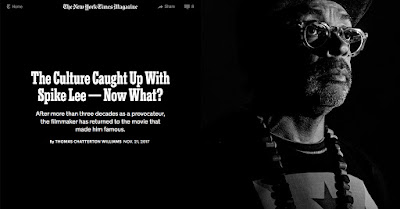
Campaign published a perspective from RAPP Global CEO Marco Scognamiglio, who pontificated on the imperative for integrity in business. Um, was this grand vision inspired to calm clients and potential jurors who might wonder about the alleged lack of integrity displayed by former RAPP Global CEO Alexei Orlov? A career adman lecturing on honesty is like Harvey Weinstein advocating for gender equality. What’s next—a Scognamiglio sermon on the benefits of diversity?
Filling the integrity void
By Marco Scognamiglio
As time has shown, poor judgment from the C-Suite throughout the business world has become emblematic of the need to overhaul how our industry is managed, says RAPP’s global CEO.
An article earlier this year in the Financial Times that examined society’s waning trust of institutions in the wake of the deadly Grenfell Towers high-rise fire—and numerous incidents of banking chicanery—featured a quote that gave me pause. “The next time I receive an invitation to chair an event on ‘how business can win back trust,’ I will suggest we change the title to ‘how to run a trustworthy business.’”
My time in advertising has offered a front-row seat to observe the erosion of the notion of trust, just as it reinforced my belief that honesty must rise in its place.
Many corporations, from GM to Apple, are widely perceived as virtually omnipotent. Similarly, the advertising agency holding companies present their employees a codified, hierarchical structure from which they dispense directives, and expect very little in the way of pushback. The assumption has always been simple: “Trust us; we know better than you.” After all, the people calling the shots are there for a reason. Right? And yet, as time has shown in the pages of the trade press, poor judgment from the C-Suite throughout the business world is regularly on display. These moments have become emblematic of the need to overhaul how our industry is managed.
In doing so, much like the world that advertising serves, we find “control” resides in the audience—or in our case, our colleagues.
To get to honesty may require some moral finetuning. It may mean we must trust that the people we work alongside can handle both good and bad news. After all, we once hired these same people for their knowledge and character. Why have we now decided they can only handle what we tell them? Akin to consumers who reject pushed messages, our colleagues aren’t buying into the one-sided, staged rhetoric.
I am an adherent to the notion that you will have a competitive edge if your colleagues are reasonably happy with their job. Vineet Nayar, author of “Employees First, Customers Second” underscored that simple, but elusive premise by declaring “Your employees are the gateway to customer satisfaction, and if they aren’t happy, the customer isn’t going to be happy.”
Taking a page out of Richard Branson’s employee-centric management playbook, I embarked on a listening tour to gauge the level of engagement our own staff had with our brand. Being true to your word begins with listening and ends with integrity. Whether inside a global organization or a small business, leaders who sit down with constituents to listen and ask questions—then take the appropriate course of action post-meeting—can yield a world of benefit.
Suffice it to say, there was plenty we could be doing differently. But let’s not be Pollyannaish about this, should I really have been surprised?
These conversations starkly reveal the lack of shared vision and the depth of misalignment of message or mission. These are tough talks, as fundamental differences come to light and disheartening trends surface. But they are also the most fruitful in diagnosing next steps. No matter the topic, they almost always require a large dose of introspection that often leads to a wholly uncharted course. I decided that we needed to take our agency back to the core values that it was founded upon: curiosity, passion and accountability.
To embark on this transformation meant I needed to evolve our leadership team in our New York North American office without exception. These moves were difficult, but we needed to approach our client’s business differently. Above all, this level of transparency put us on the hot seat to remain accountable and begin actioning on next steps.
The path of integrity begins, and potentially ends here, as you’ve now personally become the mechanism to deliver upon what was discussed. Promise too much, and under-deliver, and you create a credibility gap. Recognizing this and steering a course to both avoid this pitfall and attend to the most pressing problems is mission-critical.
And then you do it again. And again.
The impact of honesty and consistency on morale is, not shockingly, massive. What is surprising is that while many leaders claim to understand and embrace these principles, many more don’t practice them to be effective.
Consistency is the handmaiden of integrity. It forges the bond that can survive and work the strains of crisis.
Having integrity may not win any awards, and it may not show up on a balance sheet. But righting the ship when something’s been off-kilter for any reason will yield dividends. Although it has taken some time, we are seeing an increase in employee happiness—and our clients have taken note, too.
It also helps an executive sleep better at night.
Marco Scognamiglio is Global CEO at RAPP.























































